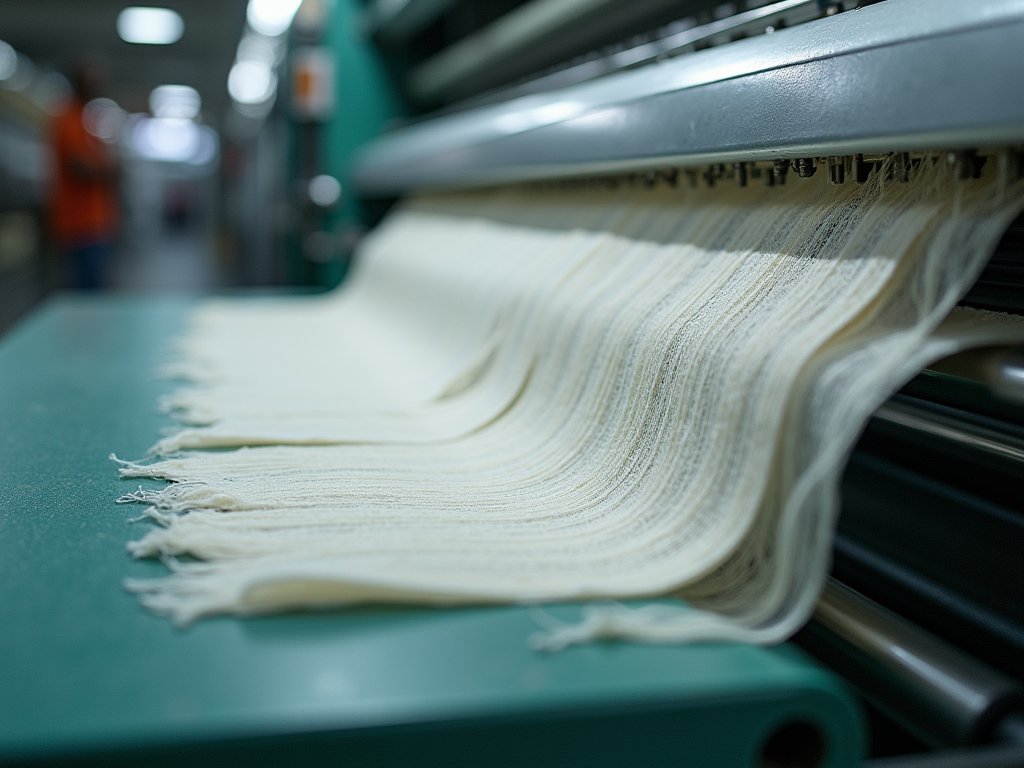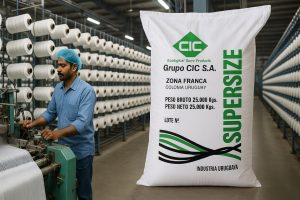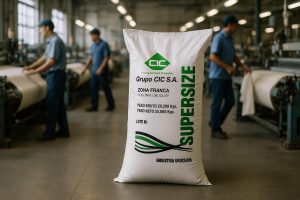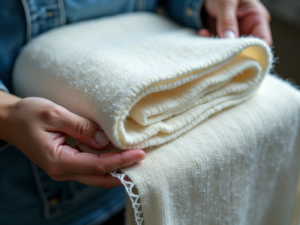The textile industry uses many processes to make fabrics strong and durable. Sizing is one of the most important steps that affects the quality of the final fabric. Whether you make textiles or are just curious about how fabrics are made, understanding sizing will help you appreciate what goes into creating quality textiles.
Understanding Textile Sizing
Sizing is a protective process that prepares yarn for weaving. It involves coating the yarn with a protective adhesive to make it stronger and easier to weave. This coating can be a single chemical or a mix of several chemicals designed for specific needs.
The main goal of sizing is to help produce quality fabric efficiently and economically. By coating yarn with sizing agents, manufacturers can reduce breakage during weaving, which leads to better fabric quality and faster production.
Why is Sizing Important in Textile Manufacturing?
Sizing offers many benefits that make it essential in textile production:
Improved Yarn Strength: Sizing holds fibers together, making the yarn stronger. This strength increase can range from 10% to over 70% depending on the yarn and sizing agent.
Better Abrasion Resistance: The coating protects the yarn surface, helping it withstand friction during weaving.
Less Friction: Sizing makes the yarn surface smoother, reducing friction during weaving and preventing yarn tangles.
Reduced Hairiness: The process keeps loose fibers from sticking out, resulting in smoother yarn.
More Elasticity: Sizing makes warp yarn more elastic, helping it adapt to different weaving patterns.
Less Static Electricity: For synthetic or blended yarns, sizing helps reduce static buildup during weaving.
The Sizing Process Explained
The sizing process involves these key steps:
- Preparing the Sizing Solution: Mixing water and sizing agents at specific concentrations and temperatures.
- Application: The warp yarn passes through a box containing the sizing chemical. The yarn moves through various rollers that help apply the sizing evenly.
- Drying: The coated yarn passes through heated drying cylinders where water evaporates, leaving a protective film on the yarn.
- After Waxing: The yarn passes over a waxing roller to add extra lubricants for smoother weaving.
- Splitting: The warp sheet is split so each yarn becomes separate again before being wound onto the weaver’s beam.
- Beaming: Finally, the warp sheet is wound onto the weaver’s beam, passing through an adjustable reed that can be widened or narrowed based on the beam width.
Types of Sizing Agents
Sizing agents fall into main agents (adhesives) and helper agents. The choice depends on the yarn type, desired properties, and how the fabric will be used.
Natural Sizing Agents
Starch-Based: Common options include wheat, potato, corn, sweet potato, rice, and tapioca starch. These are eco-friendly but may break down due to microbes.
Protein-Based: These include gelatin and glue, which offer good strength and resist moisture and heat.
Synthetic Sizing Agents
Polyvinyl Alcohol (PVA): Gives excellent stiffness and texture to fabric and resists washing and dry cleaning.
Carboxymethyl Cellulose (CMC): Offers good sticking and film-forming properties.
Acrylic Polymers: Very effective at reducing yarn breakage and improving weaving efficiency.
Blended Sizing Agents
A mix of two or more sizing materials, such as starch and PVA, can combine the benefits of both natural and synthetic sizing materials. These blends can be customized for specific fabric needs and offer good performance at reasonable costs.
Different Techniques of Sizing
The textile industry uses various sizing techniques depending on the yarn type, weaving machine, and desired fabric properties:
Hot Melt Sizing: Used for high-speed weaving, especially on modern looms, to control yarn hairiness.
Emulsion Sizing: The sizing ingredients pass through a mixture of oil polymer and soap.
Solvent Sizing: Uses organic solvents instead of water, resulting in faster yarn drying and more efficient production.
High-Pressure Sizing: Applies strong pressure to the warp yarn to help the sizing solution penetrate better.
Electrostatic Sizing: An advanced method where the sizing solution is applied using static electricity.
Foam Sizing: Uses foam to apply sizing agents, using less water and energy.
Combined Sizing: Uses multiple sizing techniques together for the best results with specific yarn types.
Choosing the Right Sizing Chemical
Picking the right sizing chemical is crucial for good fabric quality and weaving efficiency. Factors to consider include:
Yarn Type: Different yarns (cotton, polyester, blends) need specific sizing agents for best results.
Weaving Speed: Fast looms may need stronger sizing agents to prevent breakage.
End-Use of Fabric: How the final fabric will be used affects which sizing agent to choose.
Environmental Considerations: Many manufacturers now prefer eco-friendly sizing chemicals that meet global regulations.
Organic Sizing Chemicals: The Sustainable Choice
With growing environmental awareness, organic sizing chemicals have become more popular. These eco-friendly options offer several advantages:
Biodegradability: Organic sizing agents break down naturally, reducing harm to the environment.
Less Chemical Exposure: They reduce workers’ exposure to harmful chemicals during sizing.
Meeting Regulations: Organic sizing chemicals often comply with strict international environmental standards.
Customer Appeal: Fabrics made with organic sizing agents appeal to environmentally conscious buyers.
One Shot Sizing Chemicals: Efficiency in a Single Application
One shot sizing chemicals have changed the textile industry by offering a complete sizing solution in just one application. These modified starch-based compounds work well for all kinds of medium to coarse spun yarn, especially for high-speed looms.
Benefits of one shot sizing chemicals include:
More Strength: Tests show big increases in yarn strength after sizing, from 10% to over 70% depending on the yarn type.
Maintained Elasticity: One shot sizing helps keep yarn elastic while making it stronger.
Simpler Process: Eliminates the need for multiple sizing applications, saving time and resources.
Consistent Results: Provides even coating and performance across different yarn types.
Sizing Agents for Textile: Specialized Solutions
Different textiles need specialized sizing agents for best results:
Cotton Yarn Sizing Chemicals: Cotton yarns work well with starch-based sizing agents that provide good adhesion without making the yarn too stiff.
Polyester Sizing: Polyester yarns usually need synthetic sizing agents like PVA or acrylic polymers that can handle high-speed weaving.
Blended Fabrics: Yarns made from mixes of natural and synthetic fibers often need custom sizing formulas that address the properties of both materials.
The Future of Textile Sizing
The textile sizing industry continues to develop with innovations focused on:
Sustainability: Creating more eco-friendly sizing agents with less environmental impact.
Efficiency: Developing sizing chemicals that use less water and energy during application and removal.
Performance: Creating advanced sizing formulas that provide better protection and weaveability.
Smart Sizing: Adding functional properties like antimicrobial or flame-retardant features to sizing agents.
Amchem India: Leading the Way in Textile Sizing Solutions
When it comes to high-quality sizing chemicals in India, Amchem India stands at the forefront of innovation and excellence. With years of experience in the textile industry, Amchem India supplies cutting-edge sizing solutions that meet the diverse needs of textile manufacturers.
Their flagship product, Supersize, represents the best in sizing technology. Supersize is a premium one-shot sizing chemical specially formulated to enhance yarn strength, reduce hairiness, and improve weaveability across various yarn types. This innovative product delivers excellent results with a single application, saving time, resources, and energy in the textile production process.
What makes Supersize special is its balanced formula that provides optimal adhesion without excessive stiffness, ensuring that fabrics maintain their desired feel while benefiting from improved weaving efficiency. Whether you’re working with cotton, polyester, or blended yarns, Supersize offers a versatile solution that adapts to your specific requirements.
To learn more about Supersize and other innovative textile solutions, visit https://amchemindia.in/supersize/ or contact Amchem India’s expert team for personalized recommendations tailored to your textile manufacturing needs.




